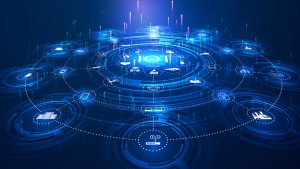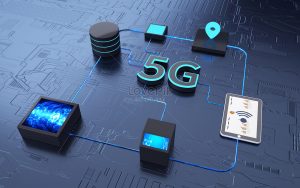The Internet of Things (IoT) has transformed the way we live, work, and interact with technology. From smart homes that anticipate our needs to connected industrial systems that optimize production, IoT is no longer just a concept—it’s a reality embedded in our daily lives. But where is IoT headed in 2025? This blog takes a
The Internet of Things (IoT) has transformed the way we live, work, and interact with technology. From smart homes that anticipate our needs to connected industrial systems that optimize production, IoT is no longer just a concept—it’s a reality embedded in our daily lives. But where is IoT headed in 2025?
This blog takes a closer look at the evolution of IoT, its current trends, its impact across industries, and predictions for the near future. Whether you’re a tech enthusiast fascinated by innovation or a business owner exploring opportunities, this guide will keep you ahead of the curve.
Key Trends and Innovations in IoT

Image by Yandex.com
The IoT ecosystem has grown rapidly over the years, and by 2025, it promises even greater advancements. Let’s explore some of the key trends shaping IoT today:
1. Rise of 5G-Driven IoT
With the widespread adoption of 5G networks, IoT devices are becoming faster, more efficient, and increasingly reliable. Low latency and high-speed connectivity enable seamless communication between devices, paving the way for advanced use cases such as autonomous vehicles and real-time monitoring in healthcare.
2. Edge Computing Revolutionizing IoT
Edge computing is enhancing IoT’s capabilities by processing data closer to the source. This reduces reliance on centralized cloud servers, cutting down on latency and improving security. For example, industrial IoT systems are using edge computing to process critical data locally, ensuring faster response times and minimizing risks.
3. AI-Powered IoT
Artificial Intelligence (AI) has become deeply integrated with IoT, enabling smart devices to learn, adapt, and make decisions. AI-powered IoT applications like predictive maintenance and intelligent home assistants are becoming the norm. As machine learning algorithms continue to evolve, IoT innovations will become even more intuitive and efficient.
4. IoT and Blockchain
Blockchain technology is playing a vital role in improving IoT security and transparency. By creating decentralized networks, blockchain prevents data tampering and ensures trust among connected devices. This is particularly impactful in supply chain management and smart contracts.
5. Sustainability and IoT
Sustainability is a growing concern across industries, and IoT is stepping in to address it. From smart grids that optimize energy consumption to precision agriculture that minimizes waste, IoT is helping businesses achieve eco-friendly practices.
IoT in Different Industries

Image by Yandex.com
The versatility of IoT is evident in its adoption across various sectors. Here’s a closer look at some of its most significant transformations:
Healthcare
IoT has revolutionized healthcare by introducing wearable devices, remote monitoring, and smart medical equipment. For example, IoT-enabled devices like glucose monitors and heart rate sensors allow doctors to track patients’ health in real-time, reducing hospital visits and improving outcomes.
Example: Medtronic, a leader in medical devices, utilizes IoT to connect insulin pumps with glucose monitoring systems, ensuring better diabetes management for patients globally.
Manufacturing
Industrial IoT (IIoT) has transformed manufacturing by enabling predictive maintenance, real-time monitoring, and smart production lines. Connected sensors on equipment can detect potential failures before they occur, saving both time and costs.
Example: General Electric’s Predix platform provides industrial operators with critical insights derived from IoT data to optimize their operations.
Retail
IoT in retail has reshaped customer experiences. Smart shelves, RFID tags, and beacons are enhancing inventory management and personalized shopping. IoT-driven analytics enable retailers to anticipate customer needs and streamline supply chains.
Example: Amazon Go stores use IoT sensors and computer vision to create cashier-less shopping experiences, revolutionizing retail convenience.
Smart Cities
The concept of smart cities is being realized through IoT solutions. Connected streetlights, waste management systems, and traffic monitoring devices are improving urban living. IoT is enabling cities to reduce energy consumption, minimize pollution, and enhance public safety.
Example: Barcelona has implemented IoT-based smart parking solutions, significantly reducing traffic congestion and fuel consumption.
Challenges and Opportunities in the IoT Space
While the potential of IoT is vast, its adoption comes with challenges that must be addressed for it to reach its full potential.
Challenges
- Data Security and Privacy: With billions of connected devices, ensuring data security is a significant concern. Breaches can compromise sensitive information and damage trust.
- Interoperability: Integrating devices from different manufacturers often poses compatibility issues, hindering seamless communication.
- Infrastructure Costs: Building infrastructure to support IoT adoption—such as 5G networks and edge computing systems—requires substantial investment.
- Skills Gap: The demand for skilled professionals in IoT development and management remains unmet, slowing innovation.
Opportunities
Despite the challenges, IoT continues to present numerous opportunities:
- Business Optimization: Companies can reduce operational costs, enhance efficiency, and improve processes with IoT solutions.
- New Revenue Streams: IoT is opening doors for businesses to create new products, services, and subscription models.
- Enhanced Customer Experiences: IoT allows for hyper-personalization, offering tailored experiences that resonate with customers.
- Sustainability Goals: IoT solutions help businesses meet environmental targets through optimized resource management.
The Future of IoT: Predictions for 2025

Image by Yandex.com
What does the future hold for IoT? Experts agree that by 2025, IoT will become even more ingrained in our daily lives and business operations, driving the next wave of digital transformation.
- Hyper-Connectivity: IoT ecosystems will expand to connect over 75 billion devices globally by 2025. This hyper-connectivity will unlock smarter solutions across industries.
- Human-Centric IoT: Expect IoT devices to focus on creating seamless, intuitive experiences that improve user convenience and quality of life.
- IoT Governance: Governments and organizations will introduce standardized policies to regulate IoT practices, particularly concerning security and privacy.
- IoT-Driven Innovation: Sectors like autonomous vehicles, renewable energy, and space exploration will rely on IoT to achieve breakthroughs.
- Democratization of IoT: IoT technology will become more affordable and accessible, enabling small businesses and startups to harness its potential.
Why IoT Matters More Than Ever
The Internet of Things is no longer just a buzzword—it’s a game-changer shaping the digital landscape. From driving efficiency to unlocking new opportunities, IoT is transforming industries and lives alike.
At Sequelnet.com, we empower businesses and individuals to tap into the full potential of IoT. Explore our services and insights to stay ahead in this exciting field. What are your thoughts on IoT in 2025? Share them in the comments below!
















